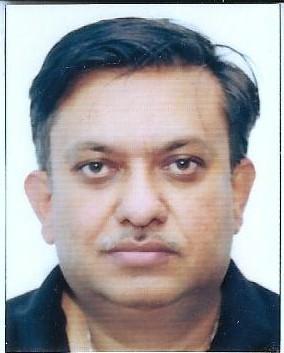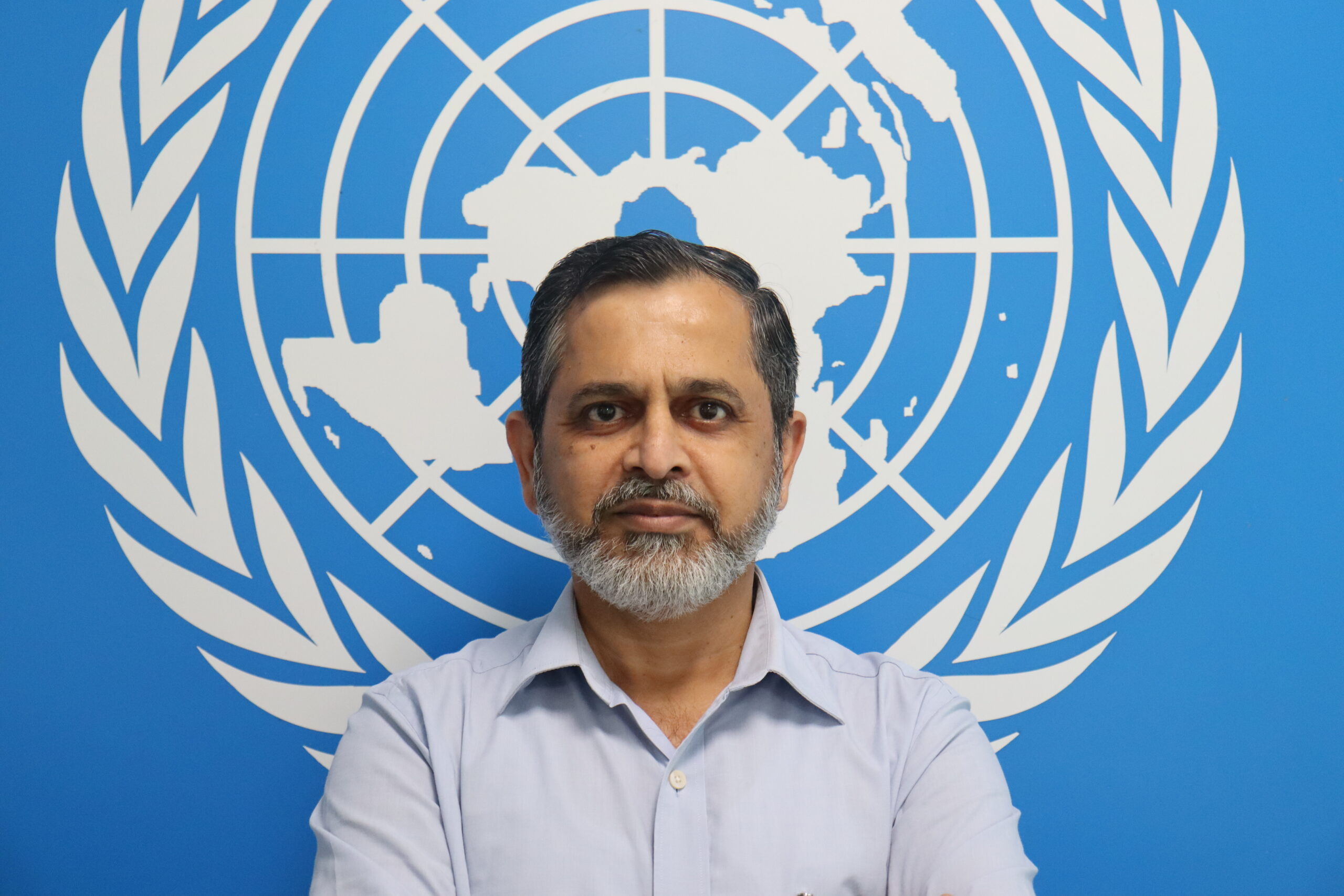Open defecation remains a global concern, due to lack of safe, affordable, and sustainable toilets. In India over 600 million people were reported to defecate in the open in 2016. The Government of India (GOI) launched the Swachh Bharat Mission (SBM) in 2014 to make India Open Defecation Free (ODF) by 2019. Swachh Bharat Mission-Gramin (SBM-G) aimed to accelerate sanitation coverage and toilet use, eliminate open defecation, and develop safe hygiene practices in rural India.
Although 630,000 villages in India declared themselves ODF in October 2019, sections of marginalised groups, such as tribal groups, people with disabilities and state-level migrants remain without access to household toilets. This poses a continued concern to communities’ ODF status, as India moves towards SDG 6.2.
In 2019-20 the GOI launched SBM (G) Phase-II to work on ODF Plus; providing INR 1,40,678 crore (or USD 19 billion) with the objective of:
- Ensuring sustained ODF status of villages (ODF sustainability)
- Including left-out households
- Initiating the effective management of solid and liquid waste
Community Sanitary Complexes (CSCs)
Phase II intends to enact the Leave No One Behind (LNOB) principle of equality, non-discrimination and equity and to establish actual ODF status by ensuring that all public spaces have toilets, and particularly by providing Community Sanitary Complexes (CSCs): i.e. public sanitation facilities in locations where household toilets are not available or possible. The CSCs have the ambition to ensure universal sanitation coverage and access which also accounts in the roving population of the country.
The LNOB principle resonated well with UNICEF’s programmatic efforts to support achievement of universal coverage to sanitation. While the design of CSCs varied among states, it was expected to include as a minimum gender-segregated toilets, urinals, and handwashing stations. Over 75,000 CSCs were planned for 2020-2021, targeting 15 million people.
UNICEF India assessment of CSCs
UNICEF India country office was requested by GOI to assess the progress of construction of CSCs in three states of Bihar, Rajasthan, and Uttar Pradesh, also providing insights for system strengthening. The assessments were conducted in late 2020 and completed in 2021.
For the CSC assessment a survey format was used for data collection along with observation. All three states of Bihar, Rajasthan and Uttar Pradesh were among the first states to start the CSC construction. Once the state selection was finalised, the state departments were contacted to provide the compiled list of completed and handed-over CSCs. From the list of completed CSCs and in discussion with state government counterpart, a sample size of 1%-5% were selected varying among states. A purposive sample selection was carried out (meaning participants in the sample are selected ‘on-purpose’ rather than randomly) due to heavy COVID-19 restriction in the states and limited travel opportunity. The quantitative findings are not statistically representative, although they cast light on relevant programme aspects.
Key participants were CSC managers and users from the community who are also caretakers of the CSCs. Female participation was encouraged to ensure a gender balance amongst the participants. The district team which comprised of government authorities such as district Panchayati raj officers, assistant district officer of Panchayati raj, block coordination officer, partner NGO staff etc., along with the enumerator, visited the selected CSC and conducted the data collection from the CSC managers and users. During this visit all physical infrastructure was vetted by the team.
Assessment findings
In terms of completion and functionality of CSCs here is an overview of the findings:
| State | Rajasthan | Bihar | Uttar Pradesh |
| CSC buildings complete | 100% | 97% | 77% |
| (Below are percentages of available facilities in relation to CSC buildings complete) | |||
| Electricity | 33% | 33% | 33% |
| Adequate ventilation | 99% | 80% | 88% |
| Privacy | 89% | 88% | 52% |
| Water supply | 77% | 33% | 50% |
| Menstrual products disposal | 0% | 0% | 0% |
| Differently abled friendly | 5% | 18% | 9% |
| Cleaning systems | 62% | 61% | 11% |
| Usage | 23% | 95% | 0% |
Completion: The completion of CSCs was at different stages when the assessment was carried out. Rajasthan and Bihar had a fairly higher percentage of completion but in Uttar Pradesh the completion rate was lower.
Design: CSCs designs underwent adaptations in all three states as per state context, with local innovations and CSC costs ranging between 2,500 and 10,000 USD, however, need for women and differently abled were not considered explicitly during the designing or adaptation by states. The designs developed by the states deviated from the standard design shared by GOI which made it difficult to consolidate for the National government. States with higher funds engaged in elaborate designing whereas other states with low funds opt out. Local innovation is appreciated to make CSCs viable for the community, however localisation in some cases doesn’t take into account issues of equity, inclusiveness and accessibility and done often as a cost cutting measure or as a result of lack of understanding of diverse needs.
Usage: The most striking finding is the percentage of the usage of the completed CSCs by the community members. In Bihar usage was at 95%, 23% in Rajasthan and 0% in Uttar Pradesh. It was found that most of the CSCs in Rajasthan and Uttar Pradesh were still not handed over to the village administration and community members were not able to use them.
Where they were being used estimated users of toilet, urinals and handwashing facilities were found to be different for each state with differences in number of toilet seats and urinals among male and female CSCs. The guidelines issued by GOI for the use of community toilets indicate that each toilet seat should be used by a maximum of 35 men and 25 women in a day (Central Public Health and Environmental Engineering Organisation (CPHEEO), 2018). Against this benchmark the number of users per toilet was found to be high in one out of the three states. This can lead to breakdown of toilet seats and poor maintenance.
Gender: The assessment wanted to identify issues around gender sensitivity around the construction of the CSCs. Most of the CSCs lacked electricity connection which is found to be a major deterrent for women in the community to access it during night. Privacy in Uttar Pradesh was found at 52% which indicated that the CSCs didn’t have separate entrance, toilets adequately covered with roof and door, which will pose as a challenge for women to use the CSC. Finally, menstrual product disposal was found to be missing in all the newly constructed CSCs, which is another impediment and gender insensitive CSC design and construction.
Inclusion and accessibility: In terms of inclusivity, differently abled toilets were assessed where 18 % of CSCs in Bihar, 9 % in Uttar Pradesh and 5 % in Rajasthan included design elements suitable for differently abled. Majority of the toilets didn’t have any child friendly or differently abled designs. The study found different designs of CSCs in each of the three states, however most lacked in gender and differently abled inclusiveness. Also the digression from the standardized design of CSC poses a question is the quality and functionality taken care of by the state.
Containment: About 11 % CSCs have single pit for excreta containment system in three states, which will further need retrofitting. The other excreta containment system was found to be two pit toilets and septic tanks. This shows that the CSCs will require operation and maintained in coming months along with desludging processes.
Water supply: Status of water supply was reported as 33 % of CSCs in Bihar, 77 % in Rajasthan and 50 % in Uttar Pradesh. Piped water supply with overhead storage tanks is very important for the CSCs as this has a direct effect on the usability of the toilets, cleanliness and in order to maintain hygiene. No running water will lead to dysfunctionality of the CSCs and eventually will be closed down affecting the resources used by states to develop it.
Cleaning: Scheduled cleaning was found in 62% of CSCs in Rajasthan, 61% in Bihar and 11% in Uttar Pradesh. As discussions with CSC managers showed, cleaning was conducted with varying frequency. Village representatives were primarily in charge of operations and maintenance, without specific budgets allotted which results in no cleaning, low maintenance and finally less users from community.
Recommendations
Some of the key recommendations from this assessment which are disseminated by UNICEF to the state government are:
- To address the issue of menstrual hygiene disposal and to make the CSCs gender sensitive, provision of dust bin in the women toilet units and the incinerator in the CSCs is recommended.
- For rural areas, the suggested design of the toilet substructure consists of two leach pits. The assessment reported installation of single leach pit excreta containment, which is likely to cause rapid filling and overflowing. The recommendation for these states is retrofitting the single leach pit to twin pits as per standard design.
- For CSCs with poor connectivity of piped water supply with overhead storage tank, the states are recommended to prioritise this issue and take it up with the state water supply program.
- Similarly, in states which have reported irregular cleaning schedules, proper cleaning, operation and maintenance mechanisms must be prioritised, engaging village local authorities, women self-help groups and the trained private players. States should allocate specific budget to the village authority to be able to continue operation and maintenance in the CSCSs.
- To meet the user load for toilet and urinals, the distribution of urinals to toilet seats needs to be further adjusted, with increased number of urinals in the CSCs to balance the load. This will need state to increase their budgetary allocation for building of new CSCs.
- Finally, states should ensure a basic standard design as shared by GOI and focus on the gaps such as; security, privacy and safe MHM for women users; ramps, railing and raised (western) toilet with seat for differently abled; and proper ventilation and electricity connection for adequate air and light allowing 24×7 usage. If required states should increase the budgetary allocation for construction of the CSCs, to make them more inclusive.
UNICEF India advocated with GOI and state governments for system strengthening, and a result of this assessment accounted for allocation of funding and advisories on various elements to meet the gaps in overall CSC program implementation.
The second round of assessments is currently ongoing and will be concluded in 2023.








